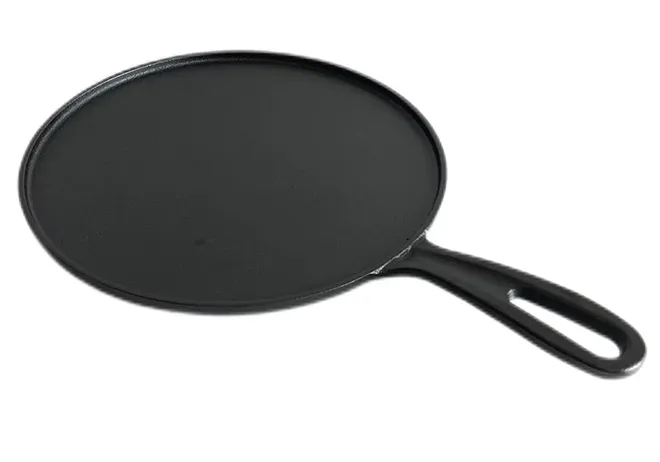
Effective Methods for Seasoning Cast Iron Tawa for Optimal Cooking Performance
The Art of Seasoning a Cast Iron Tawa
Cast iron cookware has been celebrated for centuries for its ability to hold heat and distribute it evenly, making it a favorite among culinary enthusiasts. One such versatile piece is the cast iron tawa, a flat griddle used primarily in Indian cooking to prepare everything from chapatis and dosas to pancakes and pancakes. For a tawa to deliver the best performance, proper seasoning is essential. This article will explore the importance of seasoning a cast iron tawa, the steps involved, and some tips to maintain it.
Why Seasoning is Important
Seasoning is the process of treating the cast iron surface with oil to create a natural non-stick layer. This layer not only improves the cooking surface but also prevents rust and enhances the longevity of the cookware. A well-seasoned tawa can be a joy to cook with; it allows for effortless food release and contributes to a distinct flavor in dishes. Moreover, seasoning layers can develop over time with proper care, leading to an increasingly better cooking experience.
Steps to Season Your Cast Iron Tawa
1. Clean the Tawa If your tawa is new, it may have a protective coating that needs to be removed. Use warm, soapy water and a stiff brush or sponge to scrub the surface thoroughly. For a used tawa, remove any residual food particles or rust by scrubbing it with a mixture of salt and a bit of oil. Rinse and dry the tawa completely, as any moisture can lead to rust.
2. Apply Oil Choose an oil with a high smoke point for seasoning. Flaxseed oil, grapeseed oil, and vegetable oil are great options. Pour a small amount of oil onto the tawa and use a paper towel or cloth to spread it evenly across the surface, including the sides. Make sure to apply a thin, even layer—too much oil can result in a sticky surface.
3. Heat the Tawa Preheat your oven to 375°F (190°C). Place the oiled tawa upside down on the middle rack of the oven. This allows excess oil to drip off and prevents pooling. You may want to place a baking sheet on the rack below to catch any drips. Bake for about an hour; this will help the oil bond to the cast iron through a process called polymerization.
cast iron tawa seasoning

4. Cool and Repeat After an hour, turn off the oven and allow the tawa to cool inside. This gradual cooling helps prevent cracking. For optimal results, repeat the oiling and baking process two to three times to build a robust seasoning layer.
Tips for Maintaining Your Seasoned Tawa
1. Avoid Soap After cooking, clean your tawa with warm water and a non-abrasive cleaning pad. Avoid using soap, as it can strip the seasoning. If there is stubborn food stuck, a paste of coarse salt and water can help remove it.
2. Dry Immediately After washing, ensure that your tawa is dried immediately to prevent rust. You can place it over low heat for a few minutes to make sure all moisture evaporates.
3. Re-season as Needed Over time, the seasoning can wear off, especially if your tawa is used frequently. When you notice food starting to stick or if you see any rust, it's time to re-season your tawa.
4. Store Properly To protect the seasoning, store your tawa in a dry place. If stacking with other cookware, place a paper towel between them to absorb moisture and prevent scratches.
Conclusion
Seasoning your cast iron tawa is not just a chore—it's a ritual that enhances your cooking experience while giving you a durable piece of cookware that can last generations. By understanding the importance of seasoning and following the right steps, you can ensure that your tawa remains in top condition. With regular care, your cast iron tawa will not only help you create delicious meals but will also become a cherished part of your kitchen arsenal. Happy cooking!
-
Cast Iron Cookware Pancake Pan- ZD Cookware|Non-Stick, Even Heat, DurableNewsAug.02,2025
-
Cast Iron Cookware- Baixiang County Zhongda Machinery|Non-Stick, Heat RetentionNewsAug.02,2025
-
High Quality Kitchen Durable Black Round Cast Iron Cookware Pancake Crepe Pan With Wooden Handle|Non-Stick Surface&Heat RetentionNewsAug.02,2025
-
Authentic Traditional Chinese Wok for High-Performance CookingNewsAug.02,2025
-
Season Cast Iron Perfectly with GPT-4 Turbo TipsNewsAug.01,2025
-
High Quality Cast Iron Cookware - Baixiang County Zhongda MachineryNewsAug.01,2025


